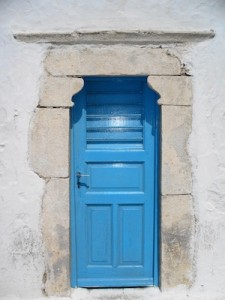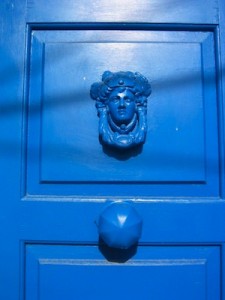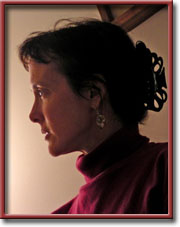Another Poem On Blue
Speculative Friction
by Claire Bateman
“Another Poem On Blue”
Can I help it that I keep writing
the same poem over & over again?

No more than I can help being
reborn into this world
a million times every instant,
a luxury so prolonged & painful
that I’m unable to adequately
prepare for it before, during, or after.
Nevertheless, I apologize,
not only to any reader
who’s already suffered
my previous poems on this color,
but also to Picasso’s famous Blue Period,
Lawrence’s “Bavarian Gentian,”
that “blue, forked torch of a flower,”
Dylan’s “Tangled Up in Blue”—
it’s impossible to list them all,
so let this serve as a blanket apology
to every one of the world’s living & dead
blue virtuosos—except the author of
“Love is Blue,” a scratched-up single
I played a dozen times every night
during the first few months of seventh grade
as I wept, ostensibly
over the unshakeable indifference
of my lab partner Arthur Farrell,
though what I was actually beginning to suffer
was my own newly-discovered strangeness,
still moist & raw, not yet grown into its wing span—
I’m still a little embarrassed
to admit how I loved that song,
despite the fact that I’ve long since realized
the entire purpose of seventh grade
is to raise up a standard of shame,
self-reproach, & psychospiritual devastation
no other epoch could hope to equal.
But this blue I’m compelled to glorify—
it’s not robin’s egg, navy, or indigo;
it’s a shade that should be named “devastation blue,”
the excruciating, lacerative blue of today’s sky
whose incandescence suggests
that its nearest blood kin is neither
violet nor emerald,
but gold—this blue must be
gold’s daughter,
the flame inside the flood,
the flood inside the wind,
the wind inside the flame,
the very reason we’ve all been tiptoeing around
in a state of perpetual pre-emergency,
as if in hard hats, anticipating tremor
& tremor’s aftermath,
the cataclysmic release from above
of everything heaven would hold back no longer,
though whether in grief or relief, no one could know.
But if only we’d bothered to glance around us,
if only we’d observed all those cumulonimbi heaping up
in even the shallowest of parking lot puddles,
if only we’d noticed the ever-expanding population
of the broken-winged, both avian & human,
maybe we would have deduced earlier
that never has the sky not been falling
from every direction, from every dimension,
above, beneath, between, within,
as if all along, even from the very beginning,

there’s been some kind of unspeakable rending
at the heart of things,
some tear, some irreversible
breaking open, because look!
Every living thirst is drinking!
Half-hidden between porch bricks,
the striped gecko flicks its forked tongue
at the freshness, then drinks;
the wild birds with their hooked &
curved & serrated beaks
drink from leafcurl, from river,
& from the air, in flight;
even the stones drink,
taking in the sweetness
through their slick & shiny
or rough & grainy skins
as stones were born to do,
though it’s not enough for them—
their flinty molecules long for more,
so because the International Law of Stones
compels them to continue
until they’re quenched,
all of them, from the softest talc
to the most impenetrable diamond,
are breaking open with loud sighs
that astonish no one more than themselves
as they begin to drink
from the inside out, guzzling
supercharged, supersaturating blue
straight from their split heartcores.
You know those kinds of sighs
that smolder with all the other exhalations
seeping bluely through the world’s every
chink, crack, fracture, perforation,
any place where the edges
don’t come together anymore,
the ripped meridian, the ruptured vein,
exactly the kind of landscape you’ll need to visit
if you want to drink from the headwaters—
& not visit only;
once you’ve located
such a wound, you’ll want to enter,
no matter how swiftly
it flickers in & out of sight.
Inside, you’ll find
there’s room to unfurl
your baby or grown-up wings,
your fastidious or blundering wings,
your blushing, drowned, or glissando wings,
your blistered, bandaged, or lightly iced-over wings—
unfurl them as far as they’ll go, or farther,
& fly around in enormous circles, figure 8’s,
rhomboids, hexadexadrons, helioglobes,
any shapes your particular wings might invent,
fly until your lungs are drinking,
your bones are drinking
even the roots of your hair are drinking
from that unstaunchable
hemmorhage of blue.
© by Claire Bateman
 GREENVILLE South Carolina—(Weekly Hubris)—11/21/11—Hello from South Carolina. I’ll be here now and then to share poems and to pass on to you highlights from what I read. I’d like to start with a passage about the nature of perception from James Elkins’s The Object Stares Back, which explores not only how we see but how we think:
GREENVILLE South Carolina—(Weekly Hubris)—11/21/11—Hello from South Carolina. I’ll be here now and then to share poems and to pass on to you highlights from what I read. I’d like to start with a passage about the nature of perception from James Elkins’s The Object Stares Back, which explores not only how we see but how we think:
![]()
“I might entertain the idea that there are two kinds of seeing, instead of the single equation that says seeing equals thinking . . . . According to the first model, thought takes place in darkness. Ideas and things and selves must be in a primordial darkness until thought sends out its beams to reveal them. But if I reflect on something, then I exist along with various objects in the world, all bathed in a light that comes from somewhere else. In the first model, blindness is all around: it is the condition of the world, and a thought is like a flashlight that temporarily reveals some local object. In the second there is no place for blindness, except in my own mind. If I fail to reflect, if I decline to try to understand the world, then I become blind, or rather I give way to the blindness that is already within me. The second model, where the world is bright and suffused with thought, really has no place for catastrophic, ongoing blindness. If I live in such a world and I choose not to see, then I suffer a momentary blindness—it might be a slip, and error, a blunder, or a mistake, or in visual terms, a blind spot, a moment or a day of hysterical blindness, amnesia about a trauma, or just a misapprehension, something I overlook, something I fail to notice. No matter how serious these blindnesses are, I can recover from them: I can become aware of my mistake; I can look again and see better. In the first model, where the world is dark and only thought can illuminate it, blindness is more permanent, and I may not be able to recover from it at all. That kind of blindness would include ingrained prejudices, permanent gaps in my thought, failures of imagination, psychotic breaks, fanaticisms and dogmas, and in visual terms, all the things I cannot see or that I refuse to see. Blindness would be all around. Every image would be a light in the darkness, and seeing or thinking would take place against a backdrop of blindness. In this way of setting the problem, blindness is the precondition and constant accompaniment of vision. It cannot be fully seen, but it must always be present wherever there is seeing.
I would be more content to think of the world as it looks each day, filled with light. The sparse shadows and dark spots that remain would be like the few gaps in my sight—the blind spot in each eye, for instance. If I choose to think this way, thought is beautiful and easy. All we have to do is conceive of an idea and it appears in front of us, bathed in the light of thought, clear and distinct in all its details. And sometimes this happens: if we know an issue very well, we can call it to mind and see all its contours, everything that is involved in it, without effort and in great clarity. But there are many other moments when the other model seems more true. If we do not understand a problem very well, then we cannot form a mental image of it. It seems dark, and thinking about it requires great effort. Even if we think hard, we may illuminate only a small portion of it, and the light we throw may make it look distorted. In that case we might say we can’t see the problem very well, that we cannot generate enough light to illuminate its outlines. It is sadder, but it strikes me that this is much closer to the truth: like seeing, thinking is intermittent, unreliable, and difficult. Both take place in darkness and both depend on light. Blindness is their constant accompaniment, the precondition of both thought and sight.”
Poet Claire Bateman’s books are Coronology and Other Poems (Etruscan, 2010), The Bicycle Slow Race (Wesleyan, 1991), Friction (Eighth Mountain, 1998), At the Funeral of the Ether (Ninety-Six Press, 1998), Clumsy (New Issues Poetry & Prose, 2003), Leap (New Issues, 2005), and Coronology (chapbook, Serving House Press, 2009). She has received the New Millennium Poetry Prize as well as grants and fellowships from the NEA, the Tennessee Arts Commission, and the Surdna Foundation. She lives in Greenville, South Carolina. (Go to http://www.etruscanpress.org/index.php/authors/a-d/claire-bateman/ for further information on Bateman and her writing.)
2 Comments
Anita Sullivan
I wish we could sit down together for coffee (wine?) I love your poetry. I am especially drawn to lines such as “there’s been some unspeakable rending at the heart of things.” Indeed. A more humorous version of this might be “We are all in the dumps, and diamonds are trumps, the the kittens have gone to St. Paul’s.” When I was on the Greek island of Ikaria I saw many blue doors. At the time, a Swiss fellow-student was obsessively photographing them. I have a poem called “Part of a Story” which features a blue door. I used to live in Clemson, SC (lived there from age 12 to age 20, a long time ago. Went to Clemson Univ.) I’ve been enjoying your book ‘The Bicycle Slow Race’ and would like to buy a copy of your latest book. Let me know where to send the check!
Claire Bateman
Anita,
What a wonderfu;lly kind comment–many thanks! Cofffee, I hope, someday! I am travelling now and am on a briefly borrowed computer so this will be brief. Blue door stor imagey–terrific! Latest book is CORONOLOGY whichh can be found on Amazon. Also have e-chapbook coming out via Mudlark before Jan. 1, I believe.
All best to you and yours, and again, thank you!
Claire